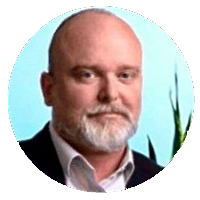The True Meaning of Christian Rosenkreutz
I have long realised that there are two branches or schools in Rosicrucianism. The first is the theosophical or mystical branch, which seeks to express the philosophy of Christian Rosenkreutz in terms of interiorised, self-initiatory spiritual development. This may include esoteric alchemy, a philosophical school which grew out of practical alchemy by amalgamation with Christian mysticism during the Middle Ages. The second branch is the more overtly occult, and which is initiatory in the traditional sense and avers to what is called “hermeticism”, a system integrating aspects of Christian and Jewish mysticism with the philosophical and magical aspects of ancient Greek and Egyptian religion. Hermeticism itself can be said to roughly divide into two principle movements or schools; that of the philosophical and mystical sub-branch, and that of theurgy, goetia, magic, practical alchemy and the Kabbalah.
Over time I have come to regard the theosophical path as the more authentic as well as the most efficacious branch of Rosicrucianism. This is because it is the more natural, and espouses transformation at the “grass roots” of an individual’s personality soul. It is that which seeks to apply universal truth in a Christianised context for the betterment of humanity. It is this approach which best summarises the true mission of C.R., as we shall discover below. Whilst the theosophical route will take longer and be more difficult for the Rosicrucian overall, this overtly mystical path sets the conditions for lasting change and feelings within the conscious and subconscious self. In contrast, the path of operative occult systems such as theurgy offer the curious seeker quicker results, but are absent a lasting, interiorised moral advancement required to better prepare for the worlds to come. This is an important point, because our present life and actions set the conditions for the next.
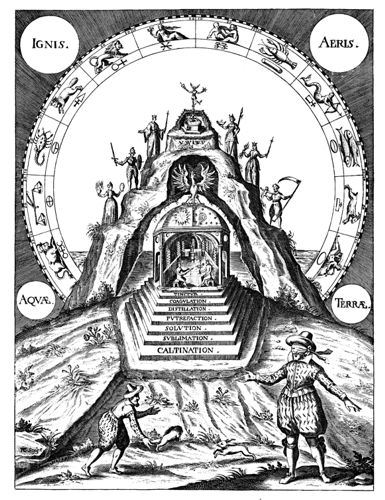 By tradition, it is said that the tomb of C.R. was “rediscovered” in 1604, a fact recounted when this mysterious influence on the development of humanity was first announced to the world. This occurred in an anonymous sixteenth century manuscript, entitled the Fama Fraternitatis, published in 1614. The manifesto described the task of the highly secretive Brotherhood of the Rosy Cross and its mission to change the temporal and spiritual path of mankind. This was followed in quick succession by two other tracts, again published in Germany, the Confessio Fraternitatis in 1615 and The Chymical Wedding of Christian Rosenkreutz in 1616. It is possible the Fama existed prior to 1614, as a notary to the Archduke Maximilian of Kessel, Adam Haselmeyer, is said to have read the tract as early as 1610 (and may well have authored it). There has been significant debate regarding how authentic these manuscripts are, and whether the content really contains the ancient wisdom of an individual dubbed Christian of the Rosy-Cross or if they were a hoax. Likewise, many regard C.R. as a fictional character, or an archetype, which was a view espoused by none other than the greatest writer on the Secret Tradition, A. E. Waite. To quote Waite:
By tradition, it is said that the tomb of C.R. was “rediscovered” in 1604, a fact recounted when this mysterious influence on the development of humanity was first announced to the world. This occurred in an anonymous sixteenth century manuscript, entitled the Fama Fraternitatis, published in 1614. The manifesto described the task of the highly secretive Brotherhood of the Rosy Cross and its mission to change the temporal and spiritual path of mankind. This was followed in quick succession by two other tracts, again published in Germany, the Confessio Fraternitatis in 1615 and The Chymical Wedding of Christian Rosenkreutz in 1616. It is possible the Fama existed prior to 1614, as a notary to the Archduke Maximilian of Kessel, Adam Haselmeyer, is said to have read the tract as early as 1610 (and may well have authored it). There has been significant debate regarding how authentic these manuscripts are, and whether the content really contains the ancient wisdom of an individual dubbed Christian of the Rosy-Cross or if they were a hoax. Likewise, many regard C.R. as a fictional character, or an archetype, which was a view espoused by none other than the greatest writer on the Secret Tradition, A. E. Waite. To quote Waite:
“ ... the story of the Fama Fraternitatis is that of the mythical founder of the Rosy Cross … a mythical personality implies a mythical foundation, in the sense that it is falsified historically.”
Either way, the manifestos influenced the greatest minds of the day, and clearly there was an antecedence prior to 1614, as discussed in my book Allegory in Stone: A Short Study of the Shakespeare Monument.
Whether C.R. was an historical personality or not does not particularly matter. It is the quality and probity of the message ascribed to him that counts. True Rosicrucianism is a philosophy, and be the adherent Christian, Jew, Muslim, Hindu or Buddhist there is a desire for the furtherance of knowledge. The point, however, is the change this elicits in the individual. Therefore, Rosicrucianism is never compatible with any system or practise that oppresses free-will or which impedes the freedom of others. Those who embrace either the Left or Right Paths of occultism cannot be disciples of C.R. His philosophy exists out of concern for the salvation of all through the development of greater self-awareness and the advantages of following the mystical-spiritual path.. Seen this way, the meditative, internalised path of the Rosy Cross is followed through meditation, good works, education and the esoteric alchemy of inward self-transformation. This is the truer of the two paths - and operative hermeticism (i.e. magic) is inferior in all respects. Indeed, it is the inner path that makes sense of the teachings of the spiritual masters, and it can therefore only be a personal path of self-initiation. It is this which best encapsulates the Rosicrucian ideal. For example I, myself, am rapidly developing at a spiritual pace that no longer desires and requires organised hermetic Rosicrucianism; which is to say I have developed to a point of self-realisation where the only advantage of persevering with it at all is to keep in touch with the friends I have made there.
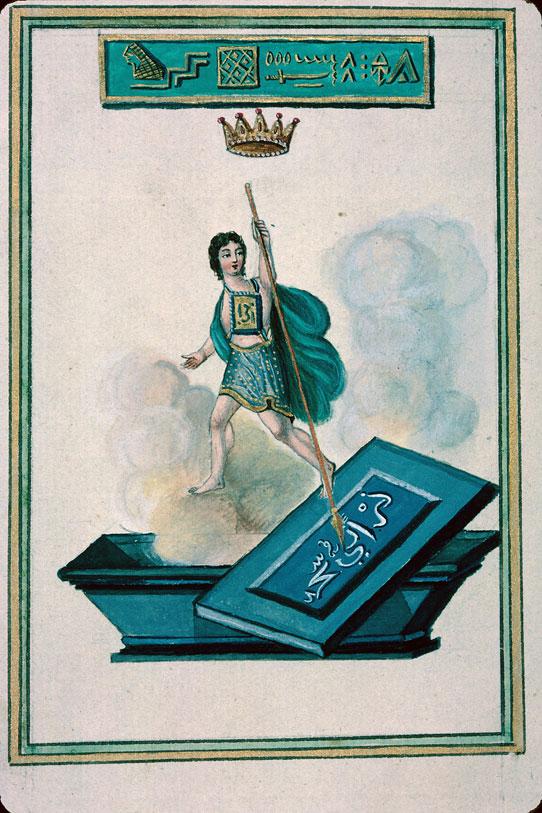 Yet, what might we learn about the historical C.R. if he did exist somewhere in history, and what does the Secret Tradition tell us about his mission?
Yet, what might we learn about the historical C.R. if he did exist somewhere in history, and what does the Secret Tradition tell us about his mission?
For me personally, the legend that C.R. was Lazarus of Bethany (Eleazar in Hebrew, meaning “one God has helped”) is particularly fascinating. This myth covers a myriad of interesting themes, such as the mystery of miracle versus theurgy, the nature of highest-grade initiation, the state of our existence between lives, and the condition we inhabit on our return. The raising of Lazarus was initiatory. He lay dead for four days in a tomb, and passed from life to death, to eternal life by a process of resurrection. His immortality is reminiscent of the theme in Sir Henry Ryder Haggard’s 1887 novel She, where the protagonist Leo Vincey enters the flame of eternal youth and cannot die. This was because his etheric body was transformed by the fiery-water of the prima materia, such that it could sustain the physical form indefinitely. From this point on, Lazarus was re-named John (meaning “Gracious”). He was the first of Jesus’ followers to understand the mystery of the Divine Incarnation of the Son of God. It was this John who, as John of Patmos, experienced the vision of the Risen Christ and authored the Book of Revelation. The legend leaves little space for the continuance of Egyptianized theurgy in the Rosicrucian path, save and to the extent that there will always remain a special place for those adepts whose task is to fight fire with fire for the benefit of redeeming humanity from the fallen archons, in short the exorcists who expel the parasites of evil from humanity. So, let us consider the circumstances of Lazarus’ initiation by Jesus in more detail, and which narrative I cover in my books The Brazen Serpent: Chaos and Order and Son of Perdition: The Magic and Hubris of Simon Magus.
 The resurrection of “the young man” by Jesus in the apocryphal Secret Gospel of Mark is so similar to the raising of Lazarus in the Gospel of John that it may preserve an alternative – possibly earlier - version of the same event. One, I feel, that has more authenticity to it, and which describes the raising of Lazaraus in greater detail than the Gospel:
The resurrection of “the young man” by Jesus in the apocryphal Secret Gospel of Mark is so similar to the raising of Lazarus in the Gospel of John that it may preserve an alternative – possibly earlier - version of the same event. One, I feel, that has more authenticity to it, and which describes the raising of Lazaraus in greater detail than the Gospel:
“And they came into Bethany. And a certain woman whose brother had died was there. And, coming, she prostrated herself before Jesus and says to him, ‘Son of David, have mercy on me’ But the disciples rebuked her. And Jesus, being angered, went off with her into the garden where the tomb was, and straightway a great cry was heard from the tomb. And going near Jesus rolled away the stone from the door of the tomb. And straightway, going in where the youth was, he stretched forth his hand and raised him, seizing his hand.”
In the Secret Gospel of Mark, in response to the petition of the woman (Mary or Martha?) and the “great cry” from within the sealed tomb, Jesus stretched forth his arm, and without vocal prayer, touched the corpse by the hand and raised Lazarus to life. Now, clearly the “great cry” from within the tomb suggests that part of Lazarus had been resurrected by the approach of Christ, but he is only raised when Jesus performs the actions of the grip and raises him. Freemasons will be familiar with the raising of the lifeless body of Hiram Abif by a grip and an embrace, and this possibly mirrors the raising of Lazarus in the Secret Gospel of Mark. The difference of course is that the soul of the dead man, plus his etheric and astral bodies, are restored to his erstwhile deteriorating physical form in the account in the Gospel of John and Secret Gospel of Mark. By contrast, Hiram Abif is truly dead in the body. This use of energy in the Gospel accounts is dramatic, and reverses the decomposition process and polarity of the energy flow from disintegration to transformation. Science does not yet understand the processes that take place after death, or indeed at what point life is said to end. Indeed, Christ’s tarrying four days in the Gospel of John to raise Lazarus, really pits the latter in the “very dead” category. There cannot be any question of it, and what took place is all about the confluence of Christ’s powers to raise the physical body of Lazarus to life at the right time, so as to ensure the latter experienced death and “the beyond” as part of his initiation. Indeed, bringing initiates back from death or the point of death was not uncommon in the ancient mystery cults, but what distinguishes this initiation is the lengthy of time Lazarus was dead. It reminds us of the work of Konstantin Korotkov on the phenomenon of “kirlian” energy fields and what might constitute the etheric body detaching from the physical form. Lazarus’ spirit and consciousness, his life spark, returning to its physical form represents the amalgamation of outer wisdom and the personalized inner wisdom of someone who has been beyond the threshold, crossed the abyss, and conquered the Guardian.
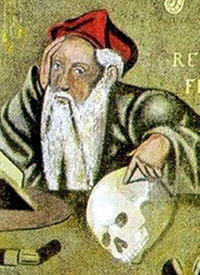 This demonstration of transcendental power is a sign of the coming Messianic Age. It also sets Lazarus-John apart for an existence of immortality, and one for which he must surely have been selected beforehand. Indeed, the shortest verse in scripture – “Jesus wept” – was about his grief at the suffering of Lazarus. What distinguishes Christ’s miracle from necromancy? The answer is his intention. It is a demonstration and a sign of God’s power on earth, and the gift of a human master who will never leave us, a permanent bodhisattva or a Babaji for the West, if you will. Such a man as Lazarus - after this “new type” of initiation – would inevitably enter into the highest mysteries of the next life because he had crossed the abyss and returned in the same life. He would be someone holding the most extraordinary knowledge, and be capable of implanting that wisdom into the individual souls of his followers long after Christ returned to his celestial abode. If this is C.R., and he is indeed the “Beloved Disciple”, then I for one cannot imagine why he would require his followers to practise theurgy, if internalised transformation on the path of cosmic consciousness alone is required for their reintegration.
This demonstration of transcendental power is a sign of the coming Messianic Age. It also sets Lazarus-John apart for an existence of immortality, and one for which he must surely have been selected beforehand. Indeed, the shortest verse in scripture – “Jesus wept” – was about his grief at the suffering of Lazarus. What distinguishes Christ’s miracle from necromancy? The answer is his intention. It is a demonstration and a sign of God’s power on earth, and the gift of a human master who will never leave us, a permanent bodhisattva or a Babaji for the West, if you will. Such a man as Lazarus - after this “new type” of initiation – would inevitably enter into the highest mysteries of the next life because he had crossed the abyss and returned in the same life. He would be someone holding the most extraordinary knowledge, and be capable of implanting that wisdom into the individual souls of his followers long after Christ returned to his celestial abode. If this is C.R., and he is indeed the “Beloved Disciple”, then I for one cannot imagine why he would require his followers to practise theurgy, if internalised transformation on the path of cosmic consciousness alone is required for their reintegration.
 In any event by tradition in 1459 C.R. incarnated with a fully transformed astral body and enjoyed a state of perfected spiritual evolution. We are told that this was made possible by his previous incarnations, particularly that in the thirteenth century, when he underwent a transformation of his etheric body (life-force) through absorbing the teaching of sublime wisdom. This happened at a pivotal point in the development of western consciousness. We see in this legend a story of transformation, of spiritual evolution. This is the meaning of the reintegration of our true, glorified forms. C.R. is indeed an archetype incarnated with the specific mission and purpose of influencing humanity through the acquisition of ever greater self-knowledge. This is achieved through self-initiation. In truth, the only genuine Rosicrucian ‘order’ is yourself, and of which you are the head and Grand Master. The Rosicrucians of the seventeenth century sought to infiltrate society to raise the common lot of man, and introduce the idealised form of government or Utopia of Plato. This could only be achieved by changing the way people thought of themselves and their place in society. This way of thinking influenced Shakespeare, Milton, Newton, Dickens, Darwin and many, many others. It had its beginnings at Bethany but its realisation came about in the mid-fourteenth century, when C.R. had already lived for over a hundred years in his present body, communicating through the metaphor of the science of the age by spiritualising alchemy. Why was this necessary? Because C.R. foresaw the emergence of a division in human consciousness from the sixteenth century onwards: into that of atheist materialism and science; and that of the spiritual path. To flourish, humanity must reconcile these two great branches. At the end of the day, C.R.’s ministry is concerned with the furtherance of love, that charity which is the Philosopher’s Stone required for both our spiritual and material evolution. He represents the higher nature of man, the glorified Adam, and he whom the raised Lazarus would call father.
In any event by tradition in 1459 C.R. incarnated with a fully transformed astral body and enjoyed a state of perfected spiritual evolution. We are told that this was made possible by his previous incarnations, particularly that in the thirteenth century, when he underwent a transformation of his etheric body (life-force) through absorbing the teaching of sublime wisdom. This happened at a pivotal point in the development of western consciousness. We see in this legend a story of transformation, of spiritual evolution. This is the meaning of the reintegration of our true, glorified forms. C.R. is indeed an archetype incarnated with the specific mission and purpose of influencing humanity through the acquisition of ever greater self-knowledge. This is achieved through self-initiation. In truth, the only genuine Rosicrucian ‘order’ is yourself, and of which you are the head and Grand Master. The Rosicrucians of the seventeenth century sought to infiltrate society to raise the common lot of man, and introduce the idealised form of government or Utopia of Plato. This could only be achieved by changing the way people thought of themselves and their place in society. This way of thinking influenced Shakespeare, Milton, Newton, Dickens, Darwin and many, many others. It had its beginnings at Bethany but its realisation came about in the mid-fourteenth century, when C.R. had already lived for over a hundred years in his present body, communicating through the metaphor of the science of the age by spiritualising alchemy. Why was this necessary? Because C.R. foresaw the emergence of a division in human consciousness from the sixteenth century onwards: into that of atheist materialism and science; and that of the spiritual path. To flourish, humanity must reconcile these two great branches. At the end of the day, C.R.’s ministry is concerned with the furtherance of love, that charity which is the Philosopher’s Stone required for both our spiritual and material evolution. He represents the higher nature of man, the glorified Adam, and he whom the raised Lazarus would call father.
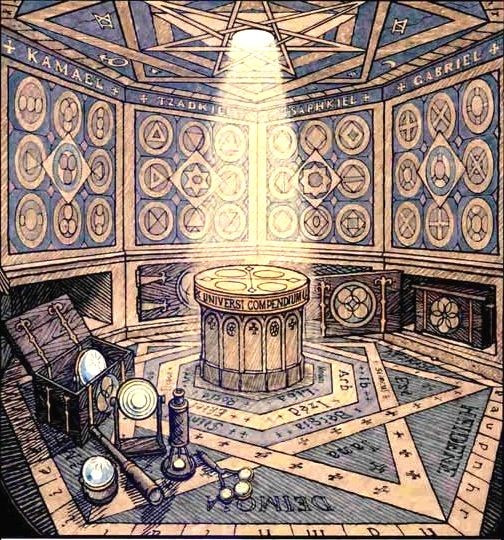
This article is the copyright (c) of M.R. Osborne, 2022

